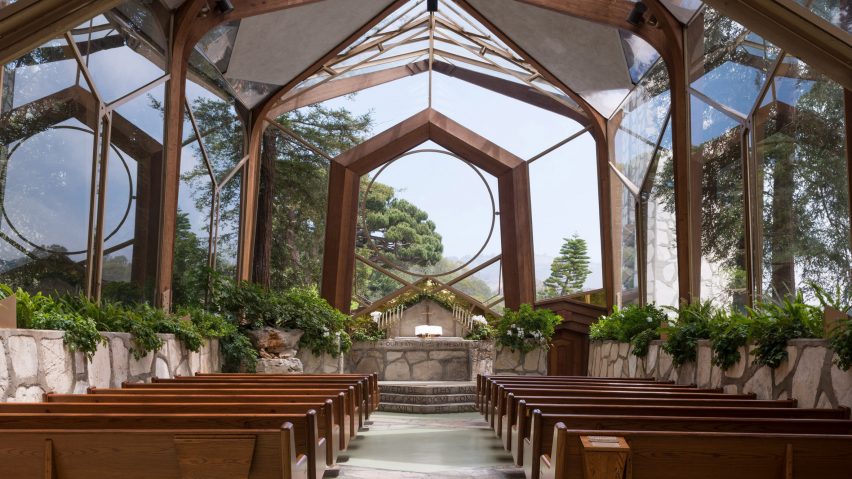
Lloyd Wright chapel to be disassembled following ongoing California landslide
Following an increase in land movement surrounding Lloyd Wright's Wayfarers Chapel outside of Los Angeles, the organisation has announced it will disassemble the landmark for preservation.
Located on the Palos Verdes Peninsula overlooking the Pacific Ocean, the 100-seat church was completed in 1951 by son of architect Frank Lloyd Wright, Lloyd Wright, and has remained a popular destination since.
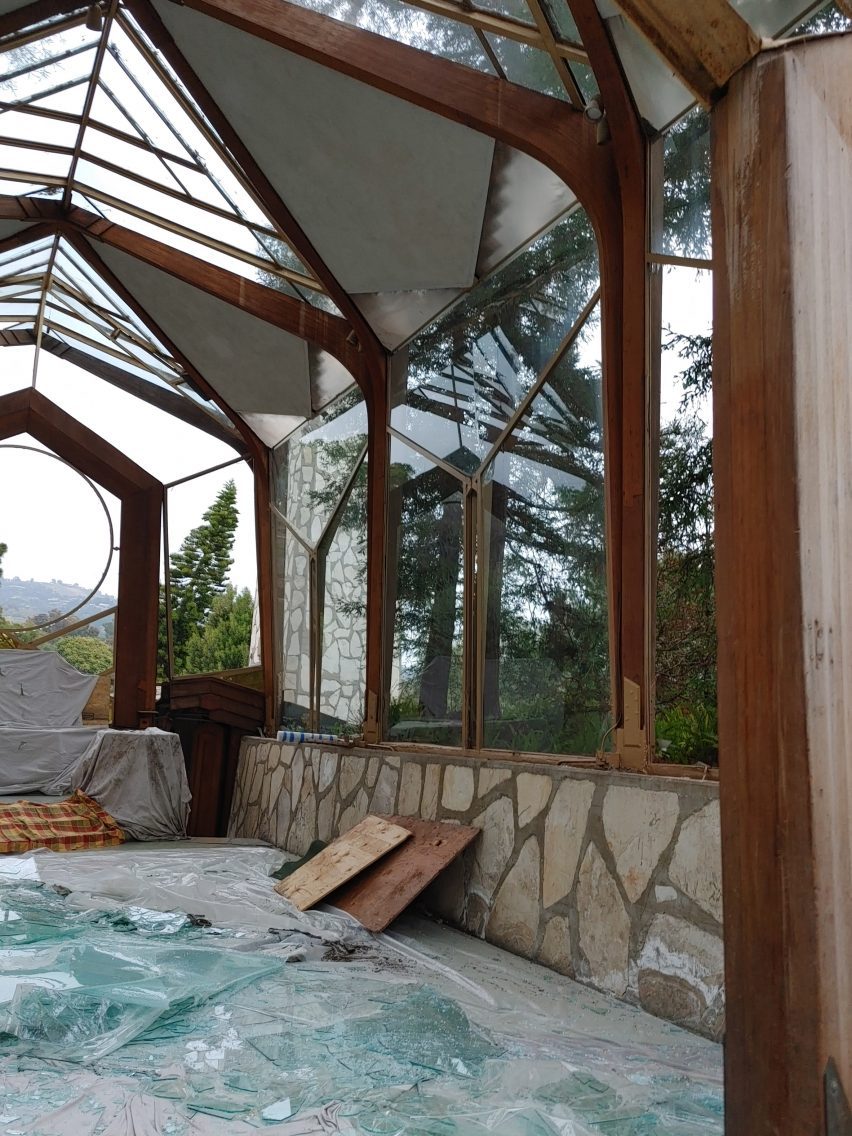
The decision to disassemble the chapel was made recently in the face of the ongoing Portuguese Bend landslide, which has been occurring in the area for over 50 years but has "accelerated at an unprecedented rate" over the last two.
"The landslide continues at a rapid pace," said the team. "The earth under the chapel property and surrounding area is currently moving 2 feet (0.6 metres) or more a month."
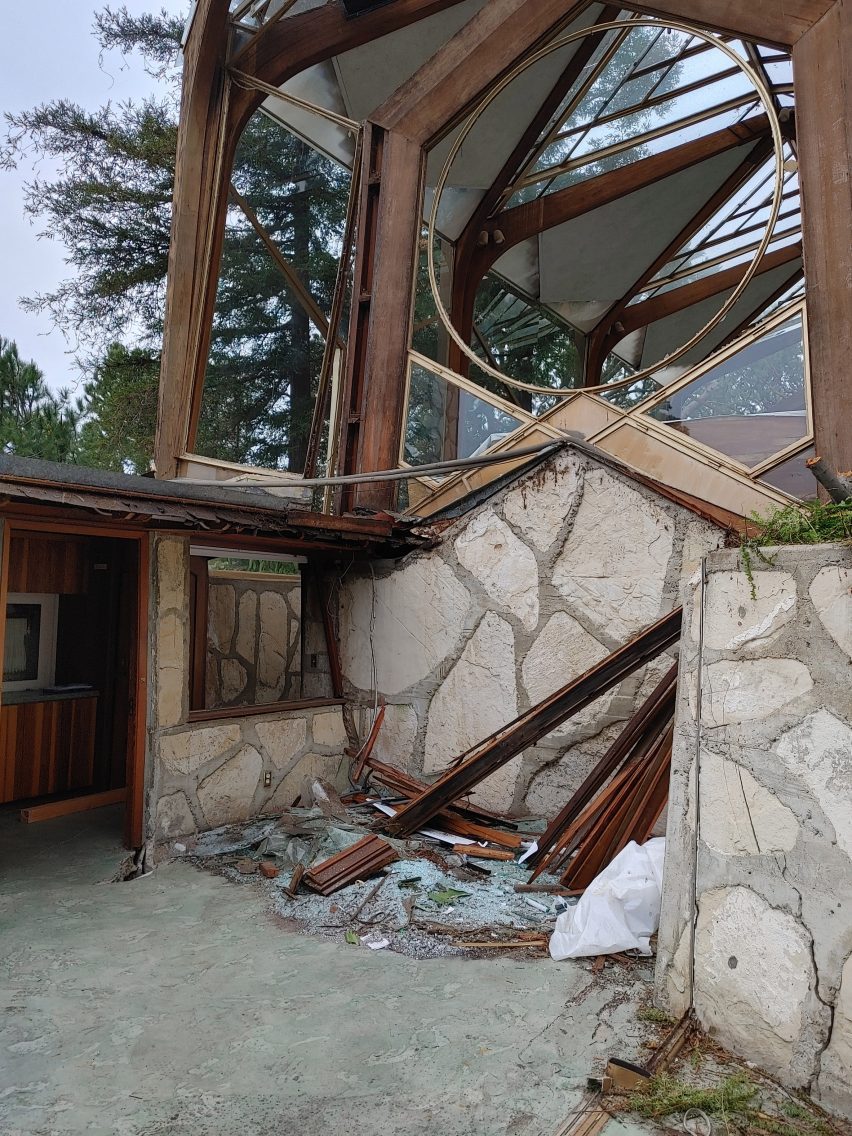
The movement has resulted in damage to both the chapel and its grounds, with the Wayfarers Chapel organization noting that its redwood structure, metal framing and ceiling are "torquing and bending", glass panels have "fractured" and the concrete floor is "heaving and cracking".
Underground utilities such as electricity, water, sewer and gas utilities have also broken and are currently unusable.
"The chapel itself is at risk for irrevocable damage if methods to save the chapel are not taken in the coming weeks," said the team.
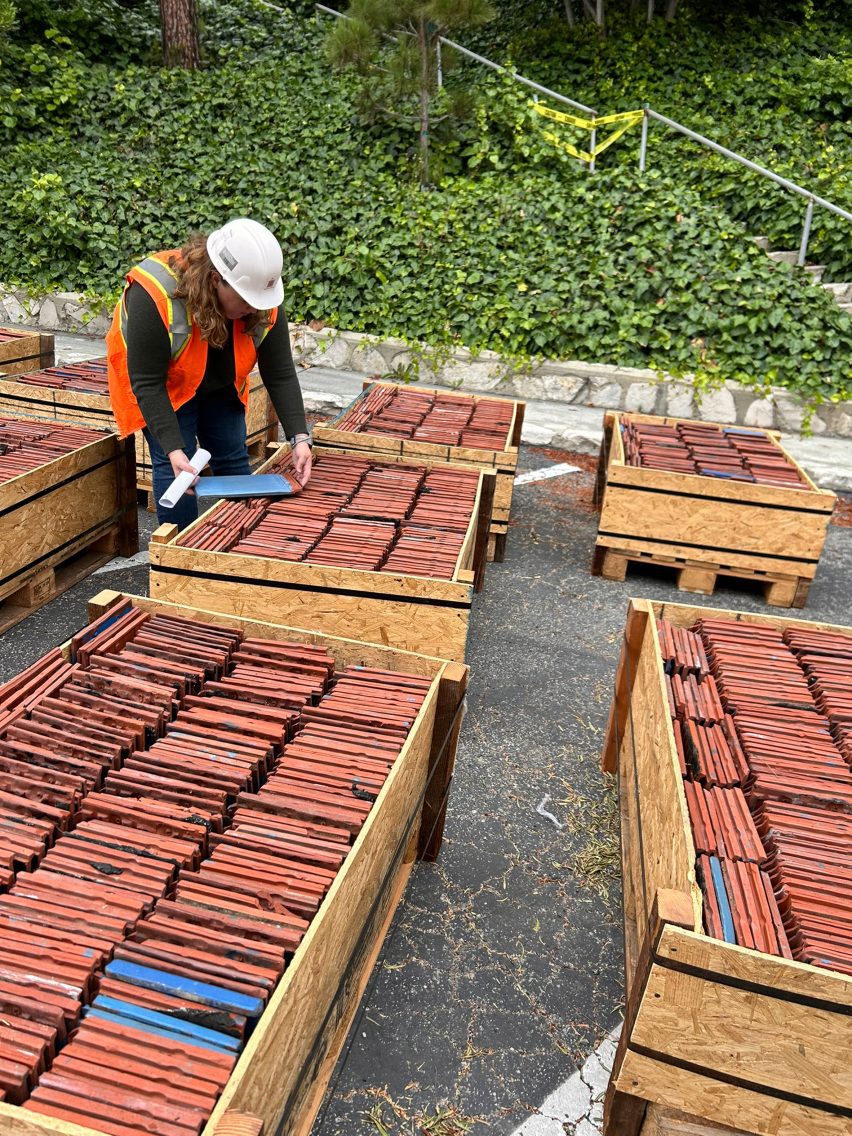
Led by Architectural Resources Group (ARG) of Los Angeles, along with "historic preservation experts" a group will deconstruct the chapel, documenting its pieces along the way, to preserve and reconstruct the structure on a nearby site.
"The accelerating destruction of Wayfarers Chapel by the Portuguese Bend landslide complex is a looming tragedy felt by many," said Wayfarers Chapel executive director Dan Burchett. "Wayfarers is committed to preserving our iconic chapel exactly as it has always been, either on the current site or a similar site close by in Rancho Palos Verdes."
"We are taking immediate action to carefully disassemble the chapel's historic materials as a necessary step in the preservation of the chapel for generations to come," he continued.
Many of the chapel's materials, which include redwood glulam, blue roof tiles and steel window framing are original to the structure and "cannot be replicated today" making its careful disassembly more paramount.
"So many of the chapel's original materials that were part of the Lloyd Wright design cannot be replicated today," said ARG principal Katie Horak. "Our team is working against the clock to document and move these building components to safety so that they can be put back together again."
It is estimated that the disassembly and reconstruction of the project will cost $300,000 to $500,000 (£234,645 to £391,075), with a GoFundMe page open for donations.
As of May 2024, the chapel and grounds are closed for the undertaking.
Affiliated with the Swedenborgian Church of North America, Wayfarers Chapel was constructed between 1949 and 1951 and serves as a memorial to 18th-century scientist and theosopher Emanuel Swedenborg.
It was built in an organic style and features large, geometric windows surrounded by an intricate steel frame that incorporates the surroundings into its design, echoing the architectural language of Frank Lloyd Wright.
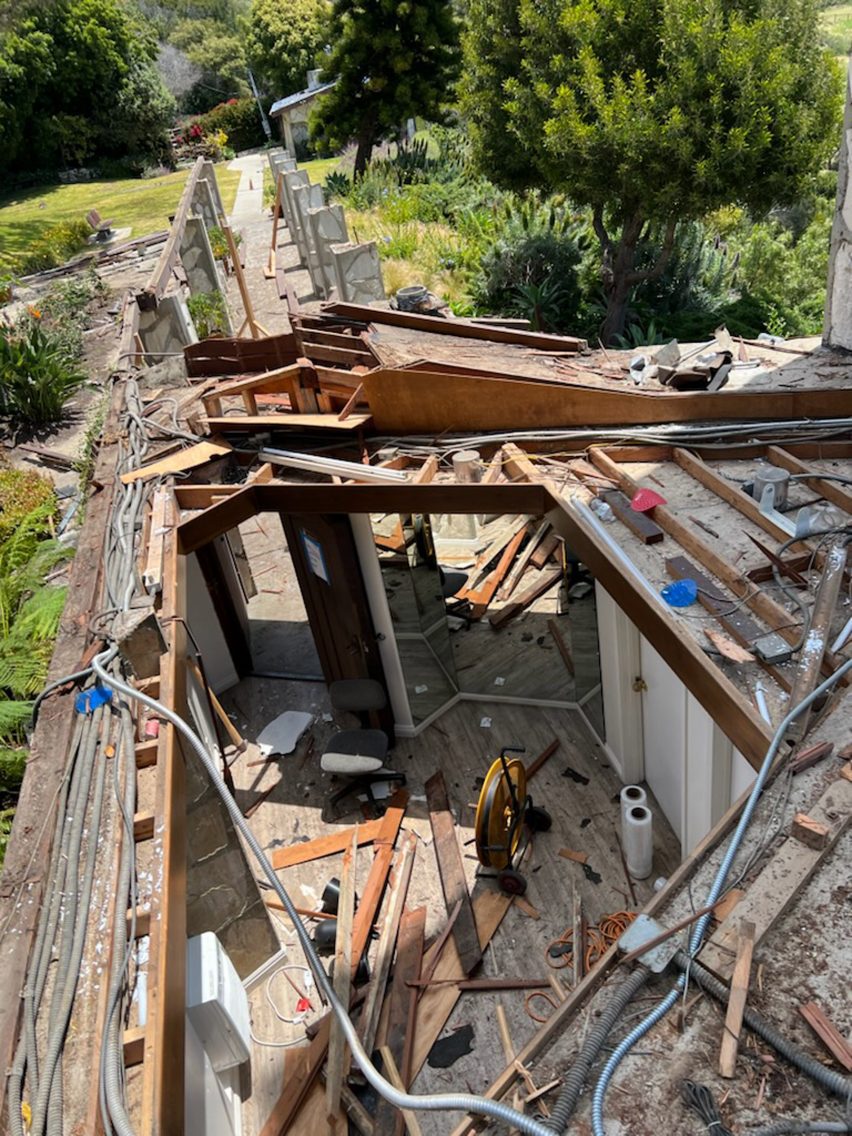
It was designated a National Historic Landmark in 2023 and before its closure in February 2024 hosted services, events and weddings.
Recently, Albert Frey's all-metal 1930s Aluminaire House was reassembled in Palm Springs and a 1950s house by Walter S White in Palm Desert was restored featuring a waved roof from its original design.
The images are courtesy of Wayfarers Chapel unless otherwise noted.